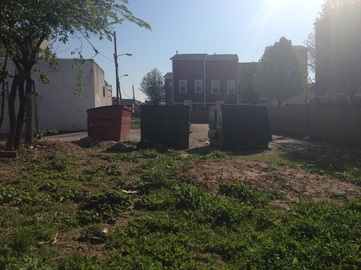
But problems are opportunities wrapped in a challenge. This alleyway is an opportunity to think creatively about what the space in the middle of a block could be like -- functional and beautiful! Who says an alley has to be ugly, smelly, or boring?
One property owner on the block has done a great job renovating a building with beautiful space that is now ready for business -- but to make this space more attractive to new business owners, we need creative ideas about how this alleyway could be transformed into a shared space for people, cars, and dumpsters. The middle of a mixed use urban block should be designed as much for an outdoor patio dining area in the back of a restaurant as for efficient management of traffic, parking, and garbage. It should also be a welcome sight for residents looking out their back windows.
What are your ideas?
 RSS Feed
RSS Feed
